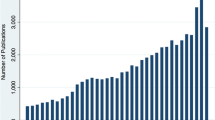Abstract
The Canadian Workplace Exposure Database (CWED) is the first of its kind in Canada. It was originally developed in 2008 by the Canadian Carcinogen Exposure project (CAREX Canada) to assist in estimating worker exposures to carcinogens across the country.
Following the CWED’s establishment, all Canadian federal and provincial agencies responsible for administering occupational health and safety regulation were surveyed to obtain a clearer picture of the quantity and quality of regulatory exposure data available. This revealed troubling reductions in exposure measurement collection, retention, and centralization by these agencies in recent years.
Such trends will limit access to workplace exposure measurements for federal and provincial regulatory agencies as well as health researchers. Workplace exposure databases are used around the world for a variety of important purposes, such as identifying hazardous workplaces and workers at risk, assessing temporal–spatial trends, setting priorities for prevention, and informing epidemiological research.
Efforts are underway to preserve historical data and promote prospective collection, however future success of the CWED will require collaboration and long-term vision on the part of those responsible for collecting workplace exposure measurements in Canada.
Résumé
La Base de données canadienne sur l’exposition professionnelle aux agents cancérogènes (BCEPC) est la première du genre au Canada. Créée en 2008 par le projet CAREX Canada, elle sert à estimer l’exposition des travailleurs du pays aux agents cancérogènes.
Après la création de la BCEPC, nous avons sondé les organismes fédéraux et provinciaux du Canada chargés d’administrer la réglementation sur la santé et la sécurité au travail pour obtenir un portrait plus clair de la quantité et de la qualité des données réglementaires sur l’exposition disponibles. Ce sondage a révélé des réductions troublantes dans la collecte, la conservation et la centralisation des indicateurs d’exposition par ces organismes au cours des dernières années.
De telles tendances limiteront l’accès des organismes de réglementation fédéraux et provinciaux et des chercheurs médicaux aux indicateurs d’exposition en milieu de travail. Les bases de données sur l’exposition en milieu de travail sont utilisées autour du monde dans divers buts importants, notamment pour identifier les lieux de travail dangereux et les travailleurs à risque, évaluer les tendances spatio-temporelles, décider des priorités en matière de prévention et éclairer la recherche épidémiologique.
Des efforts sont en cours pour préserver les données historiques et promouvoir la collecte prospective, mais le succès futur de la BCEPC exigera une collaboration et une vision à long terme de la part des responsables de la collecte des indicateurs d’exposition professionnelle aux agents cancérogènes au Canada.
Similar content being viewed by others
References
Vincent R, Jeandel B. COLCHIC-occupational exposure to chemical agents database: Current content and development perspectives. Appl Occup Environ Hyg 2001;16(2):115–21.
Stamm R. MEGA-database: One million data since 1972. Appl Occup Environ Hyg 2001;16(2):159–63.
Burns D, Beaumon P. The HSE National Exposure Database—(NEDB). Ann Occup Hyg 1989;33(1):1–14.
Lavoue J, Friesen MC, Burstyn I. Workplace measurements by the US Occupational Safety and Health Administration since 1979: Descriptive analysis and potential uses for exposure assessment. Ann Occup Hyg 2013;57(1):77–97.
Boiano JM, Hull, RD. Development of a National Occupational Exposure Survey and Database associated with NIOSH hazard surveillance initiatives. Appl Occup Environ Hyg 2001;16(2):128–34.
Peters CE, Ge CB, Hall AL, Davies HW, Demers, PA. CAREX Canada: An enhanced model for assessing occupational carcinogen exposure. Occup Environ Med 2014 (In press).
Occupational Cancer Research Centre. The human and economic burden of occupational cancer in Canada (research project summary). Available at: http://occupationalcancer.ca/2011/the-human-and-economic-burden-ofoccupational-cancer-in-ontario/ (Accessed June 2, 2014).
Lofgren DJ, Reeb-Whitaker CK, Adams D. Surveillance of Washington OSHA exposure data to identify uncharacterized or emerging occupational health hazards. J Occup Environ Hyg 2010;7(7):375–88.
Teschke K, Olshan AF, Daniels JL, De Roos AJ, Parks CG, Schulz M, Vaughan, TL. Occupational exposure assessment in case-control studies: Opportunities for improvement. Occup Environ Med 2002;59(9):575–94.
Zalk DM, Nelson, DI. History and evolution of control banding: A review. J Occup Environ Hyg 2008;5(5):330–46.
CAREX Canada. The Canadian Workplace Exposure Database, 2013. Available at: http://www.carexcanada.ca/en/canadian_workplace_exposure_database/ (Accessed June 2, 2014).
Cherrie JW, Sewell C, Ritchie P, McIntosh C, Tickner J, Llewellyn D. Retrospective collection of exposure data from industry: Results from a feasibility study in the United Kingdom. Appl Occup Environ Hyg 2001;16(2):144–48.
Caldwell DJ, Armstrong TW, Barone NJ, Suder JA, Evans, MJ. Lessons learned while compiling a quantitative exposure database from the published literature. Appl Occup Environ Hyg 2001;16(2):174–77.
Author information
Authors and Affiliations
Corresponding author
Additional information
Acknowledgements of support: The CAREX Canada project is funded by the Canadian Partnership Against Cancer. The Canadian Workplace Exposure Database (CWED) has been developed through funding from the Canadian Partnership Against Cancer, WorkSafeBC’s Innovation at Work program, and the Workers Compensation Board of Manitoba.
Conflict of Interest: None to declare.
Rights and permissions
About this article
Cite this article
Hall, A.L., Peters, C.E., Demers, P.A. et al. Exposed! Or not? The diminishing record of workplace exposure in Canada. Can J Public Health 105, e214–e217 (2014). https://doi.org/10.17269/cjph.105.4266
Received:
Accepted:
Published:
Issue Date:
DOI: https://doi.org/10.17269/cjph.105.4266




